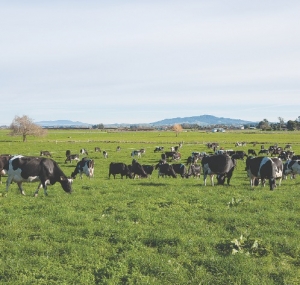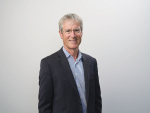There are many risk factors for milk fever including:
Genetics. Jersey cows are much more likely to get milk fever than Friesians.
Milk production level. High producers are more susceptible because the fall in their blood calcium level is greater.
Age. Older cows produce more milk and are less able to replace blood calcium quickly. Heifers are rarely affected.
Diet. Feeds containing high levels of potassium and phosphorus reduce the cow’s ability to absorb calcium.
Most milk fever cases occur within a day of calving. The birth process and colostrum production requires a lot of calcium and to meet the demand, cows must mobilise calcium from their bones and increase the amount of calcium they absorb from the diet. Magnesium is required for the production of hormones that control these processes and therefore supplementation of magnesium is critical in milk fever prevention.
Late dry cow management
Careful management of late dry cows can greatly reduce the risk of milk fever.
Springing cows should not graze high potassium pastures (e.g. effluent paddocks or those recently fertilised with potash) or be fed pasture silage or hay made from these paddocks. The amount of high phosphorus supplements (e.g. palm kernel, broll or distiller’s grains) in the diet should be limited.
The current DairyNZ recommendation is to feed 20g magnesium per cow per day from two to three weeks prior to calving until there is enough magnesium in the diet. This normally occurs somewhere between early November and Christmas2. Magnesium sulphate and magnesium chloride are more effective at preventing milk fever than magnesium oxide (causmag) however they are less palatable. Keep to the recommended magnesium feeding rates. Too much magnesium can cause scouring and impact the uptake of other minerals including calcium. Also remember that although cows have significant stores of magnesium, they can only access what is provided in feed, so it is important to supplement magnesium on a daily basis.
Management of calved cows
Supplement cows with calcium (e.g. ground limestone) immediately after calving and as required throughout the lactation. The best way to determine calcium requirements is to test all feeds. While cows being fed low calcium supplements (e.g. maize or cereal silage or grains) are more likely to require higher rates of calcium, many high producing herds fed pasture-based diets are also calcium deficient.
Keep dietary drymatter intakes up and continue to supplement magnesium until at least early November.
The role of maize silage in reducing milk fever
Maize silage has an important role to play in decreasing milk fever risk:
Growing maize decreases soil potassium levels. Maize produces high yields and has a high potassium requirement. Research has shown maize can be grown in high fertility dairy paddocks (including effluent paddocks) without the need for extra fertiliser. This produces low cost maize silage and drops soil potassium levels, reducing the risk of milk fever.
Feeding high rates of maize silage to late dry cows reduces milk fever risk. Maize silage contains low levels of potassium and phosphorus. It can be used to help increase calcium absorption and decrease the risk of milk fever at calving.
Maize silage is an ideal carrier for minerals. Maize silage is an ideal carrier for magnesium (pre and post calving), calcium (post-calving) and other minerals. Mineral wastage is much lower than for pasture dusting.
Careful dietary management of cows in the late dry period and early lactation can reduce the risk of milk fever. Consider growing and feeding maize silage as part of your milk fever management plan.
1 Roche, DairyNZ, Preventing milk fever – are all magnesium sources equal? http://www.dairynz.co.nz/file/fileid/27279
2 DairyNZ Farmfact 3-1: Magnesium supplementation http://www.dairynz.co.nz/file/fileid/36336
• Ian Williams is a Pioneer forage specialist. Email; This email address is being protected from spambots. You need JavaScript enabled to view it.
















